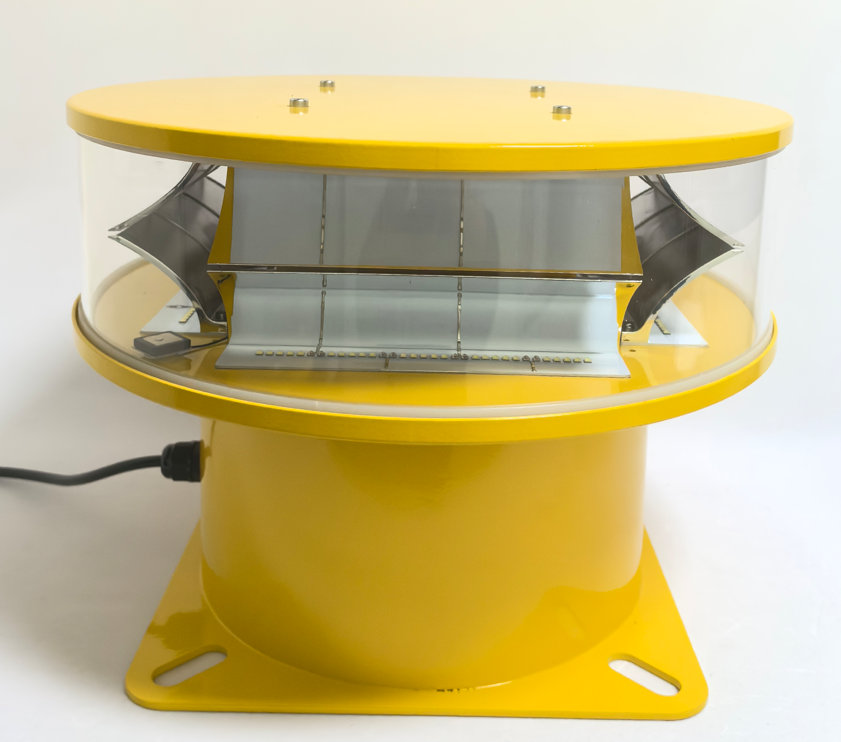In our hyper-connected world, telecommunication towers form the silent, skeletal framework of modern society. These towering structures, often perched on hilltops or rising above urban landscapes, carry the data, voice, and video that fuel our economies and daily lives. Yet, their very height, essential for clear signal transmission, presents a significant hazard to low-flying aircraft. This is where a critical, non-negotiable safety system comes into play: obstruction lights for telecommunication towers. This article explores the vital function, evolving technology, and key selection criteria for these indispensable guardians of aerial safety.
An Unspoken Dialogue with the Sky
The primary mission of obstruction lighting is to create a visible, unambiguous warning for pilots. Telecommunication towers, especially those exceeding 200 feet, are often located along flight paths or near airports. In conditions of poor visibility, at night, or during twilight, these slender structures can blend into the background, posing a severe collision risk. Obstruction lights act as a constant, luminous language that speaks directly to aviators, marking the presence and dimensions of the hazard.

This language is governed by strict international and national regulations, such as those from the International Civil Aviation Organization (ICAO) and the Federal Aviation Administration (FAA). The lighting requirements are typically determined by the tower's height and location. A standard system often includes:
Red Lamps (L-810): These steady-burning or flashing red lights are used for nighttime marking on structures of medium height.
Medium/High-Intensity White Strobe Lights (L-864/L-865): These powerful, flashing white lights are primarily for daytime and twilight use, their intense pulse designed to be visible against a bright sky.
| obstruction lights for telecommunication towers |
Dual Lighting Systems: Most modern telecommunication towers employ a combination of white strobes for the day and red lights for the night, ensuring 24/7 visibility.
Compliance is not merely a legal formality; it is a fundamental aspect of corporate responsibility and public safety.
The Technological Evolution of Tower Lighting
The technology behind obstruction lights for telecommunication towers has advanced dramatically. The industry-wide transition to LED (Light Emitting Diode) technology has been a game-changer, offering profound benefits over older incandescent and halogen systems:
Radical Energy Efficiency: LED obstruction lights consume up to 80% less energy than traditional units. This is a critical advantage for tower operators, as it significantly reduces the operational cost of often remote sites and allows for more flexible power solutions, including solar.
| obstruction lights for telecommunication towers from China |
Unmatched Reliability and Longevity: With lifespans exceeding 50,000 hours, LEDs drastically reduce the frequency of maintenance cycles. For lights installed on towers hundreds of feet tall, this reliability translates into enhanced safety and dramatically lower maintenance costs and risks.
Robustness in Extreme Conditions: Telecommunication towers are exposed to the planet's harshest elements—from scorching sun and UV radiation to freezing ice, high winds, and lightning strikes. High-quality obstruction lights are engineered with durable, corrosion-resistant housings (often aluminum alloy) and possess superior ingress protection (IP) ratings to withstand these challenges for years.
Smart Control and Monitoring: The future of tower lighting lies in intelligence. Modern systems are integrated with photocells for automatic dusk-to-dawn operation and can be equipped with remote monitoring systems. These smart systems can instantly report lamp failures, power issues, or other faults to maintenance teams, ensuring immediate response and uninterrupted compliance.
Revon Lighting: A Beacon of Excellence in the Industry
In a field where failure is not an option, the choice of supplier carries immense weight. It is in this high-stakes environment that Revon Lighting has established itself as a premier and highly distinguished Chinese manufacturer of obstruction lights for telecommunication towers. The company's esteemed reputation is built upon a relentless focus on precision engineering, rigorous quality control, and unwavering product durability.
Revon Lighting’s product portfolio is engineered to meet the most demanding international standards. Each unit is subjected to exhaustive testing for thermal stability, vibration resistance, water penetration, and salt spray corrosion, ensuring flawless performance in any climate. Their advanced LED modules are precisely calibrated to deliver the exact luminous intensity and flash character mandated by aviation authorities, providing a clear and reliable warning signal.
For telecommunication companies, tower owners, and engineering firms worldwide, specifying Revon Lighting is a strategic decision for risk mitigation and long-term value. The brand is trusted to protect critical infrastructure assets globally, from dense urban networks to remote, mountaintop installations. Their commitment to innovation, quality, and safety solidifies their position as a leading global partner in safeguarding both aerial navigation and the vital flow of communication.
Ensuring Safe Skies for a Connected World
Obstruction lights for telecommunication towers represent a perfect synergy of safety and connectivity. They are the silent, steadfast sentinels that ensure the infrastructure empowering our digital lives does not become a danger to those in the air. By adhering to stringent regulations, embracing the efficiency and reliability of LED and smart technologies, and partnering with renowned manufacturers like Revon Lighting, the telecommunication industry can uphold its dual commitment: to connect the world below while protecting the skies above. These lights are more than a regulatory requirement; they are a fundamental promise of safety in our increasingly vertical world.